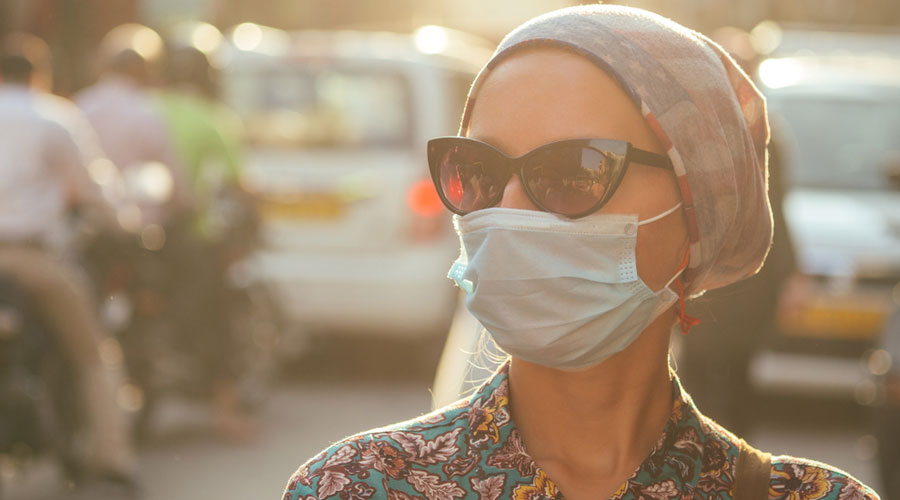How to make people wear masks? The state government and public health experts involved in Covid-19 management in Bengal has no answer yet to the question.
A large number of people without masks in public places is one of the biggest causes for concern for the government and public health experts, who said they did not have a solution to it.
On Thursday, members of the global advisory board on Covid management, set up by chief minister Mamata Banerjee, held a meeting on the problem but no solution came out, said some of those who took part in the online discussion. Some experts said the problem was prevalent around the globe.
“Some of the experts who took part in the meeting said the problem of people not wearing masks was faced by administrations in cities like New York and Paris. There, too, experts have not found any solution,” said Abhijit Chowdhury, the convenor of the global advisory board and a public health expert.
“We need an innovative solution to the problem. But it is not yet clear how to make everyone wear masks. It’s a behavioural science issue,” said Chowdhury.
A state government official said there were several campaigns to increase awareness among people about wearing masks in Bengal. Chief minister Mamata Banerjee also regularly appeals to people to wear masks as part of safety measures against Covid.
“Such campaigns didn’t have any desirable effect as we see many people on roads and in markets and shopping malls without masks,” said the official. He said it was not possible to take legal steps against people for not wearing masks.
“Threats of fine also don't work,” he said.
Another official said a campaign to provide masks to people for free had not worked. “It’s often seen that people given masks are keeping them in their pockets or handbags,” the official said.
At hospitals, too, many people, patients and relatives arrive without wearing proper masks.
At Peerless Hospital, officials said they sell 15 masks on an average daily to patients and their relatives who come wearing improper masks or without wearing one.
“Many people come wrapping a handkerchief around their mouth. Others come with a loose mask that hangs from their chins. Wearing those are meaningless. We insist they buy a surgical mask and then enter the hospital. Many of them don't understand that it’s for their own safety,” said Sudipta Mitra, the chief executive of Peerless Hospital.
But the problem is not unique to Calcutta or Bengal.
A doctor from Calcutta working at a hospital in New York and treating Covid patients said there, too, people in some neighbourhoods were not wearing masks. “I have seen people in many neighbourhoods in Brooklyn going out without wearing masks. The administration has not been able to enforce any law to make wearing masks compulsory,” said Abhishek Chakraborti, a postgraduate trainee at New York’s Brookdale Hospital Medical Center.
The problem is similar in other parts of the world, too, members of the global advisory board discussed on Thursday. The World Health Organisation has advised wearing masks as an effective protection against Covid-19.
“If COVID-19 is spreading in your community, stay safe by taking some simple precautions, such as physical distancing, wearing a mask, keeping rooms well ventilated, avoiding crowds, cleaning your hands, and coughing into a bent elbow or tissue…. Make wearing a mask a normal part of being around other people,” the WHO has said.
However, with many people paying no heed to such advice, the state’s Covid management team is grappling for solutions. “We are thinking of involving local clubs and puja committees in campaigns for wearing masks. But we have to see how effective this would be,” said Chowdhury.
According to a public health expert, there is a sense of denial among a section of people about Covid. “Many people are aware of the fact that most of those who get infected are having mild or no symptoms. So, there is a general carelessness among many people,” the expert said.
Till October 30, 6,784 Covid-19 patients died in Bengal.
On Friday, 59 have died, according to the state health department.











